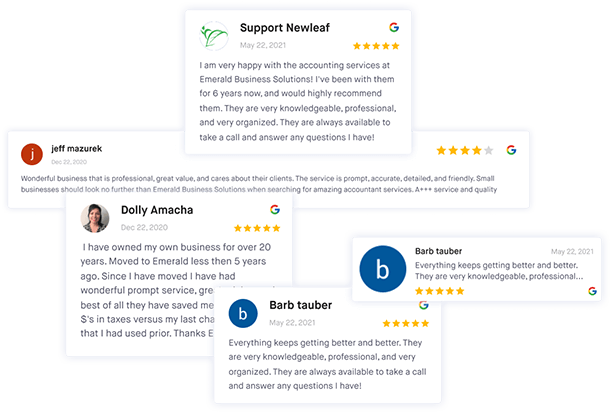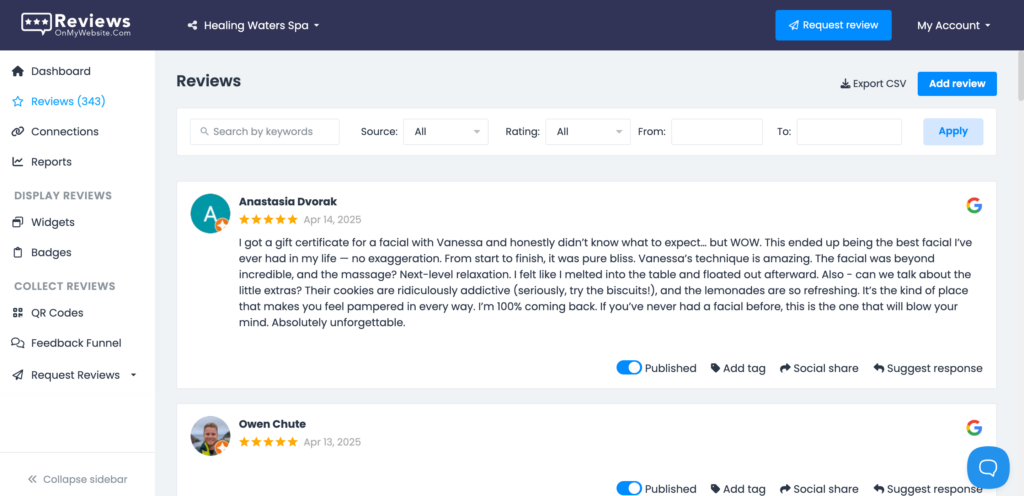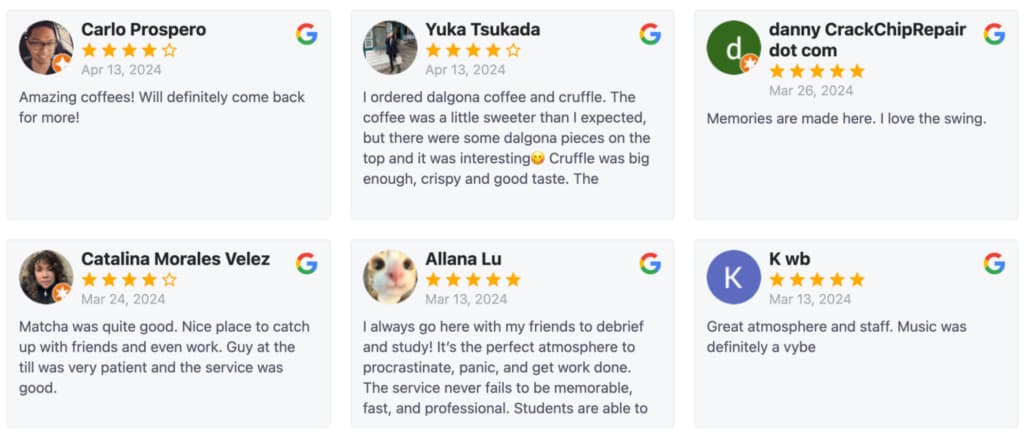If your dental practice wants more calls and bookings from Google, dental SEO (search engine optimization) is the most reliable way to get there.
In plain terms, search engine optimization helps your practice show up on the first page of the Search Engine Results Page (SERP) when people nearby search for a dentist, a specific procedure, or urgent help.
In this guide, you’ll find step-by-step tactics you can apply today to increase your chances of driving more patients from search results.
Let’s get started.
1. Find the Right Keywords to Create the Content Patients Want
Keyword research helps you understand what potential patients are searching for before they ever call your office. It’s not just about adding the right phrases to your website — it’s about uncovering topics worth writing about.
Start by thinking like your patients. What do they Google before booking an appointment? It might be “how much does Invisalign cost,” “is teeth whitening safe,” or “what to do if a filling falls out.”
Each of those searches is an opportunity to create a short blog post, FAQ, or service page that answers that exact question.
You can use tools like Semrush or Ahrefs to perform keyword research. Type in a core term like “dental implants” and note the related questions people ask.
These are often the best ideas for new content because they reflect real concerns: cost, recovery time, or insurance coverage.
Focus on a mix of service-based and educational keywords:
- Service-based keywords attract patients ready to book, such as “emergency dentist near me” or “same-day crowns.”
- Educational keywords reach people who are researching options, like “Invisalign vs braces for adults” or “how to fix a chipped tooth.”
Once you have a list, organize it by intent. Topics that show buying intent (like pricing or location) deserve full service pages. Questions that show curiosity make great blog posts or explainer guides.
By building content around what patients already search for, you attract qualified visitors who are more likely to turn into appointments. Over time, this steady stream of helpful content builds trust—and Google rewards that consistency with higher visibility.
2. Create Helpful Service Pages That Feel Like Consultations
Each service page on your website should do more than describe a procedure. It should feel like a friendly conversation that helps patients understand what they need, what will happen, and how to take the next step.
These pages also signal to Google exactly what your practice offers, which improves your chances of showing up when people search for that treatment.
Here’s how to make each service page clear, welcoming, and effective:
- Start with who the service helps: Describe the situations or symptoms that lead someone to need this treatment. Use simple language like “If you have a cracked tooth or large filling, a crown can protect and restore it.”
- Walk through the procedure step by step: Explain preparation, what happens during the visit, and what recovery looks like. Keep the tone calm and reassuring so patients feel informed, not anxious.
- Talk about cost and insurance clearly: Mention what affects the price, whether insurance usually covers the treatment, and how payment plans work. Clear explanations make patients more confident about booking.
- Address risks and recovery: Briefly note possible side effects and typical healing time. Setting expectations early reduces fear and prevents cancellations.
- Add short FAQs and strong calls to action: Answer a few common questions right on the page, then include a “Book Appointment” button or phone number near the top and bottom. When patients never have to hunt for contact options, more of them reach out.
When each service page reads like a caring, one-on-one explanation, it builds trust with patients while helping your site rank for the treatments that matter most.
3. Build Location Pages That Feel Local
Your location pages are some of the most important on your website. They help you appear in “near me” searches and make potential patients feel confident that you’re close, convenient, and easy to find.
When written well, these pages also help Google understand exactly where your practice operates and which areas you serve.
Create a Strong City Page
Start with one main page for your primary city or service area. Include a Google Map, clear directions from local landmarks, and details about parking or public transportation.
Add photos of your staff and office so visitors can recognize the space before they arrive. A short welcome message from your lead dentist makes the page feel personal and trustworthy.
Add Neighborhood or Suburb Pages if Needed
If your practice serves multiple neighborhoods or suburbs, create a dedicated page for each one. Mention local landmarks, nearby schools, or popular shopping areas that patients would recognize.
Keep each page unique so it doesn’t sound copied or generic. The more specific and human these pages feel, the better they connect with local patients.
Show Local Trust and Community Involvement
Patients want to know you’re part of their community, not just located nearby. Include reviews that mention your city by name, and share photos from charity drives, school visits, or local events your team participates in.
Listing accepted insurance plans and languages spoken in that location also builds comfort and trust. Local signals like these tell both patients and Google that your practice is truly rooted in the area.
Connect Multiple Offices Clearly
If you have more than one location, help visitors choose the most convenient one. Add a short section linking your offices together with driving times, distances, or maps.
Patients appreciate being able to compare locations without having to start their search over. This small detail improves usability and keeps potential patients on your site longer.
Keep It Simple and Helpful
A clear, friendly location page is often the final step before a patient decides to book. Make it easy for them to find your office, learn what to expect, and feel welcomed before they even walk through the door.
When your local content feels personal and practical, both people and search engines will see you as the obvious nearby choice.

Improve your dental practice's online reputation
Use ReviewsOnMyWebsite to manage and improve your dental practice's online reputation.
4. Optimize On-Page Elements Without Overdoing It
In dental SEO, even small on-page changes can make a big difference. The goal is to help both Google and potential patients quickly understand what each page offers so they feel confident visiting your website and contacting your practice.
Here’s how to make your pages clear, professional, and search-friendly:
- Write clear, natural titles and headings: Use your main service and city name together, such as “Dental Implants in Austin.” Keep titles short, accurate, and easy to read. Avoid repeating the same keyword too many times, since Google looks for clear, helpful phrasing over keyword stuffing.
- Start with a clear promise in your first paragraph: Tell visitors exactly what the page covers and how it helps them. Short, simple sentences keep readers comfortable and make your content easier to skim.
- Use scannable subheadings and internal links: Organize each page into sections like cost, recovery, and risks. Add links to related service pages or dentist bios to help visitors find more information and keep Google crawling through your site.
- Write helpful meta descriptions: This short summary appears under your page title in Google search results. Keep it under 160 characters and use plain language that answers what the page is about and why it’s worth clicking.
Strong on-page clarity improves click-through rates and helps more visitors choose your practice from search results.
5. Fix Technical SEO Essentials
Your website’s technical setup is what helps Google understand and rank your pages. When it runs smoothly, patients can find you easily, and your site loads fast on any device. These are the most important checks to keep your dental website healthy.
Make Sure Google Can Crawl and Index Your Pages
Google has to see your pages before they can show up in search results. Check that your robots.txt file doesn’t block important pages and that your XML sitemap includes your main service and location pages.
Submit the sitemap in Google Search Console so Google knows what to index. A quick crawl check ensures that new content or updates are visible to patients searching for you.
Keep the Site Secure and URLs Simple
Your website should always run on HTTPS, which keeps patient data safe and shows that your site is trustworthy. Choose one version of your domain (either with or without “www”) and stick with it to avoid confusing Google.
Use short, clean URLs such as “/teeth-whitening-austin” instead of long, complicated ones. Simple, secure URLs make your site easier to navigate and easier to rank.
Fix Broken Links and Redirect Old Pages
Broken links frustrate patients and make your site look neglected. Regularly check for “404 not found” pages and repair or remove them.
When you move a page, use a 301 redirect so Google and visitors go to the new version automatically. Clean internal links keep visitors on your site longer and protect your search performance.
6. Speed Up Your Website
A fast, stable website keeps visitors engaged long enough to book or call. You don’t need a full rebuild—just a few smart changes that improve how your site loads and performs:
- Optimize and properly serve images: Compress photos to reduce file size, convert them to WebP or AVIF, and resize them to fit their actual display size. Dental sites often use before-and-after photos or staff images, so optimizing these can make a big difference.
- Load code efficiently: Defer non-critical JavaScript so important content appears first, and only include the CSS needed for the visible part of the page. This makes the site feel faster even on slower mobile connections.
- Use lazy loading wisely: Load images and videos only when the user scrolls near them. This speeds up the first screen and improves core web vitals like loading and visual stability.
- Use a reliable content delivery network (CDN): A CDN stores copies of your site across different regions, allowing patients to load pages quickly no matter where they are. Most hosting providers include one, or you can use services like Cloudflare or Amazon CloudFront.
- Upgrade your hosting if needed: Shared hosting can slow your site if other websites on the same server get busy. Look for a plan that offers solid-state drives (SSD), good uptime, and server locations near your patients.
7. Keep Your Google Business Profile Complete and Active
Your Google Business Profile (GBP) is one of the most powerful dental SEO tools you have. It decides how you appear on Google Maps and local search results, and it often gives patients their first impression of your practice.
Here’s how to optimize it:
- Choose the right primary category: Most dental practices should select “Dentist” as their main category. This helps Google understand your core service and match your profile to nearby patient searches.
- Add secondary categories that reflect your services: Include options like “Cosmetic Dentist,” “Emergency Dental Service,” or “Pediatric Dentist.” The closer your categories match your real offerings, the more likely you’ll appear for those specific searches.
- List individual treatments as services: Add each treatment you offer—like dental implants, Invisalign, or teeth whitening—with short, plain-English descriptions. These entries help both Google and patients quickly understand what you do.
- Fill in every key detail: Complete your hours, phone number, website link, and booking URL so patients can act immediately. Add attributes such as “Wheelchair accessible entrance” or accepted insurance to build trust and reduce phone questions.
- Upload high-quality photos: Add clear images of your exterior and reception area. Real photos help potential patients picture your space and feel more comfortable booking an appointment.
- Post updates regularly: Use Google Posts for promotions, seasonal messages, or news from your practice. Fresh activity signals to Google that your business is active and engaged with patients.
A complete, active Google Business Profile shows patients that your practice is professional, responsive, and ready to help. It’s one of the simplest ways to improve visibility and win new appointments.
8. Manage Reviews Effectively
A steady flow of genuine reviews and polite replies helps your dental practice stand out. Patients rely on reviews to decide which dentist to trust, and Google uses them as a strong local ranking signal.
The more consistent you are about collecting and responding, the more your reputation grows over time.
Make It Easy to Leave a Review
The best time to ask for a review is right after a good appointment. Place a small sign or printed QR code at your front desk that links directly to your Google review page.
Have staff mention it casually when a patient checks out—something simple like, “If you enjoyed your visit, we’d really appreciate a quick review on Google.”
Follow up within 24 hours by email or text to thank the patient and include that same review link. A short, polite message and easy access make all the difference.
Pro tip: You can use ReviewsOnMyWebsite to automatically send email and SMS review reminders and ensure every patient gets asked to leave a review.
Reply to Every Review
Responding to reviews shows that you value feedback and care about each patient’s experience.
Thank people for positive reviews personally, and avoid generic replies like “Thanks!” For negative reviews, acknowledge the concern without discussing health details, and invite the patient to contact you privately.
According to our research, 70% of consumers expect a response to a review within one to three days, so staying timely builds trust.
You can use ReviewsOnMyWebsite to track all the reviews your business gets across different platforms and read and reply to them from one central location.

Showcase Reviews Where Patients Decide
Your best reviews shouldn’t stay buried on Google. Add a few quotes and star ratings to high-traffic areas of your website, such as your homepage or service pages.
This is easy to do with ReviewsOnMyWebsite’s customizable review widget.

When people see real experiences from other patients right next to your booking or “Call Now” buttons, they’re more likely to take the next step.
You can also share positive reviews on social media or in email newsletters to reach potential patients who may not have visited your site yet.
Building a simple, repeatable system for reviews helps your practice maintain a great online reputation. Over time, this consistent activity strengthens both visibility and trust—two essentials for attracting new patients.

Improve your dental practice's online reputation
Use ReviewsOnMyWebsite to manage and improve your dental practice's online reputation.
9. Build High-Quality Citations & Healthcare Directory Listings
Consistent listings across trusted directories reinforce your practice’s legitimacy and improve local visibility. Think of them as “digital references” that should all say the same thing.
Here’s how to keep your listings clean, consistent, and trustworthy:
- Prioritize the most important platforms first: Claim and update your listings on Google, Yelp, and healthcare directories patients actually use. Completeness across a few strong sites beats dozens of thin listings.
- Keep your NAP consistent everywhere: Your name, address, and phone should match your website and GBP exactly. Even small variations can create duplicates or weaken trust signals.
- Clean up duplicates and old addresses: If you’ve moved or rebranded, find outdated listings and request removals or merges. That prevents confusing patients and splitting reviews.
- Review listings quarterly: A quick audit every few months keeps everything aligned and catches incorrect edits.
10. Optimize for Featured Snippets and AI Overviews
When people search for dental questions, Google often shows a short box at the top of the page with a quick answer. That’s called a featured snippet. It pulls text directly from a website that answers the question clearly and concisely.
Earning this spot can bring your practice more visibility, especially for patients asking questions about treatments or symptoms. Clear, simple writing also makes it easier for AI-generated summaries to include your content in future search results.
Here’s how to make your content more likely to appear in these results:
- Add short, clear definitions: After each heading that introduces a treatment or topic, include a short 40–60-word paragraph that defines it in plain language. For example, “A dental crown is a cap that covers a damaged tooth to restore its shape, strength, and appearance.”
- Use questions as subheadings: Write headings the way a patient would ask them, such as “How long does a root canal take?” Then answer immediately and directly in the first sentence that follows.
- Summarize key steps or takeaways: When explaining a longer process, end the section with a short summary that restates the main idea in simple terms. These summaries are easy for both people and search engines to understand and display.
- Keep information accurate and credible: Add dentist bios and credentials on pages that discuss treatments, and include a “last reviewed” date at the bottom. This shows readers and Google that your information is up to date and comes from qualified professionals.
Clear, honest explanations not only help your website rank better but also build confidence with patients who want to understand their treatment options quickly.
11. Earn Links Through Local Relationships and Credibility
Backlinks are links from other websites that point to your own. Google views them as a sign of trust and authority—especially when they come from reputable, locally relevant sources.
For dental practices, earning good backlinks strengthens your local SEO and helps your website appear higher in searches like “dentist near me.” Here are reliable ways to build quality links without gimmicks or technical tricks:
Join Local and Professional Directories
Professional and community directories are still powerful sources of high-quality links. Make sure your practice is listed on local Chamber of Commerce pages, city business directories, and reputable dental associations.
Fill out every section completely and include a link to your website. These listings not only boost your authority but also help patients discover you through trusted networks.
Contribute to Local Media and Community News
Local news outlets and community blogs are always looking for expert commentary. Reach out to reporters or editors to offer insights on dental health topics such as back-to-school checkups or teeth-whitening safety.
When your comments or articles are published, they often include a link back to your website or bio. These earned mentions are among the strongest backlinks a local practice can get.
Sponsor or Support Community Events
Community events often feature sponsor lists and thank-you pages online. Support local sports teams, school fundraisers, or health fairs that post their sponsors on their websites.
Make sure your practice name links directly to your homepage or location page. It’s a natural way to build visibility, goodwill, and links that both Google and your community value.
Strengthen Links From Professional Partnerships
If you work with dental labs, referral specialists, or other healthcare providers, ask to be listed as a partner on their websites. Include a short description and a link back to your own site in exchange for doing the same.
Mutual professional recognition builds authority in both directions and reinforces trust with patients and search engines alike.
By focusing on relationships, partnerships, and local credibility, your link-building efforts become sustainable and authentic.
These connections not only help your rankings—they strengthen your reputation in the community you serve.
Frequently Asked Questions About Dental SEO
What Is Dental SEO?
Dental SEO is the process of improving your website and local listings so your practice appears higher in unpaid search results when nearby people look for a dentist or a specific treatment.
It includes fixing technical issues, creating clear service and location pages, and keeping your Google Business Profile complete and active. The goal is to turn more searches into calls and booked appointments.
How Does SEO Benefit A Dental Practice?
SEO puts your practice in front of people at the exact moment they’re looking for help, which increases qualified calls and bookings. Strong SEO also builds trust through helpful content and a steady flow of reviews that show real patient experiences.
Over time, your reliance on paid ads can decrease as organic traffic becomes a stable source of new patients.
How Much Does Dental SEO Cost?
Costs vary by market competition and scope, such as how many locations you have and how much content you need.
Many practices budget a monthly retainer for ongoing work, while others prefer a defined project for foundational fixes and content. Ask providers to connect deliverables to clear KPIs like calls, bookings, and new-patient counts so you can judge value.
How To Measure SEO ROI For A Dental Practice?
Track calls that last more than 60 seconds, completed forms, and online bookings as conversions, then count how many become new patients.
Estimate lifetime value—how much a typical new patient spends over time—and compare it against your SEO spend. Review trends monthly so you can see progress and decide where to focus next.
How Can I Improve My Practice’s Local SEO?
Complete every field in your Google Business Profile and add accurate categories, services, and fresh photos.
Keep your name, address, and phone number consistent across directories patients use, and encourage a steady flow of honest reviews.
Build clear service and location pages in plain language so visitors quickly understand care options and how to contact you.
Future-Proof Your Marketing With Consistent Dental SEO
Pick three actions this week—then revisit quarterly. Clean up your Google Business Profile, set up automated review requests, and upgrade one high-value service page.
Dental practice SEO benefits from steady, small improvements that compound over time.




